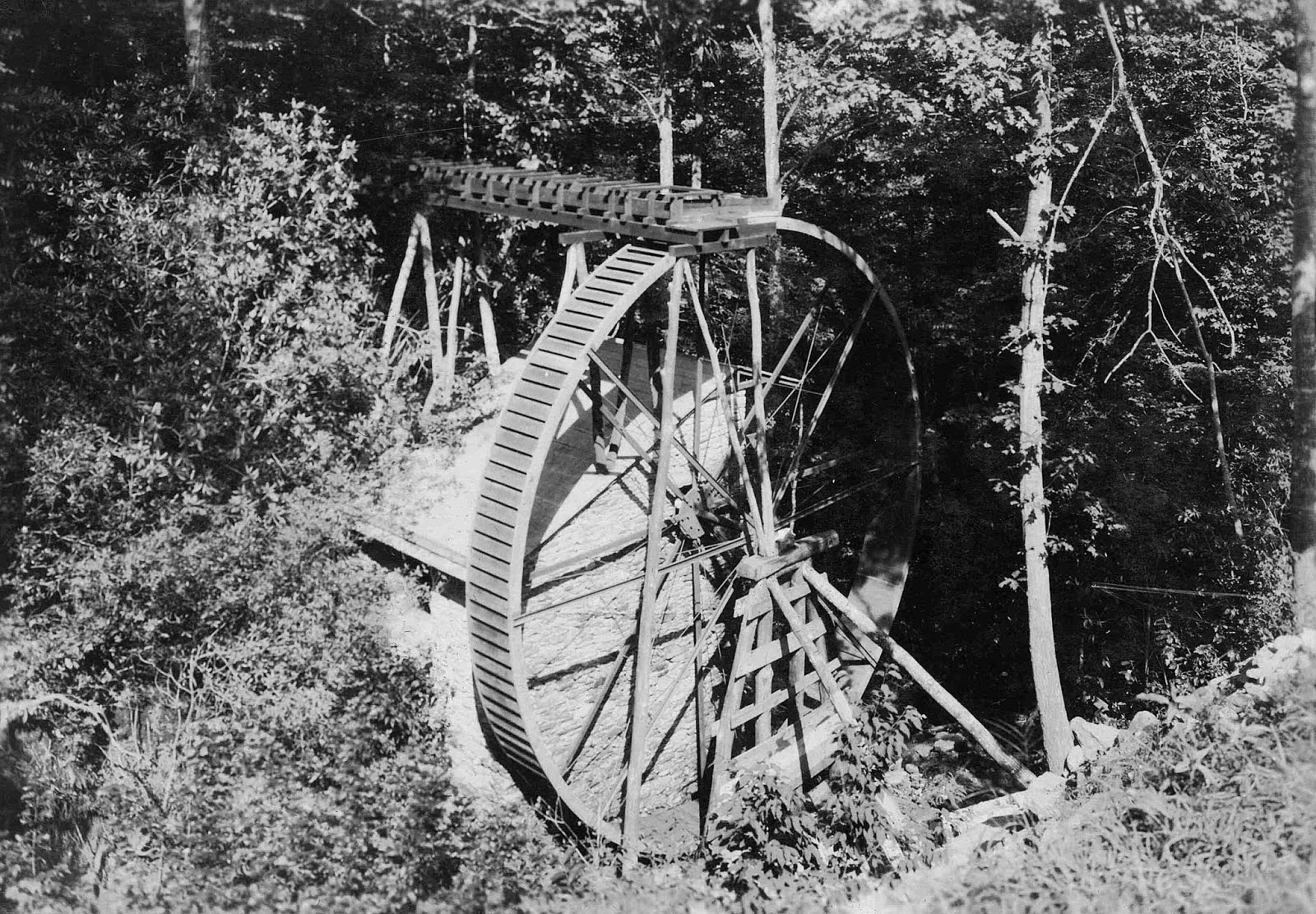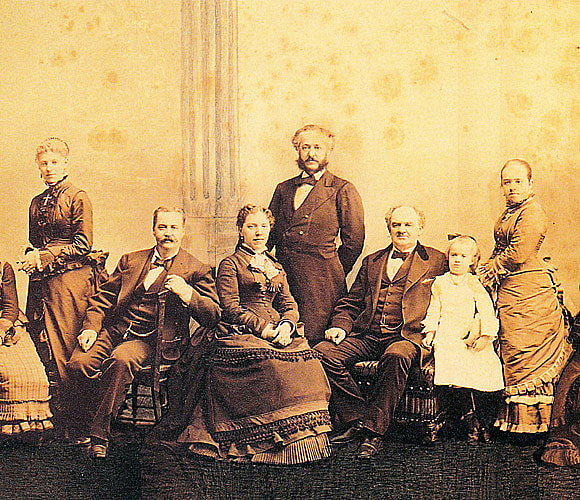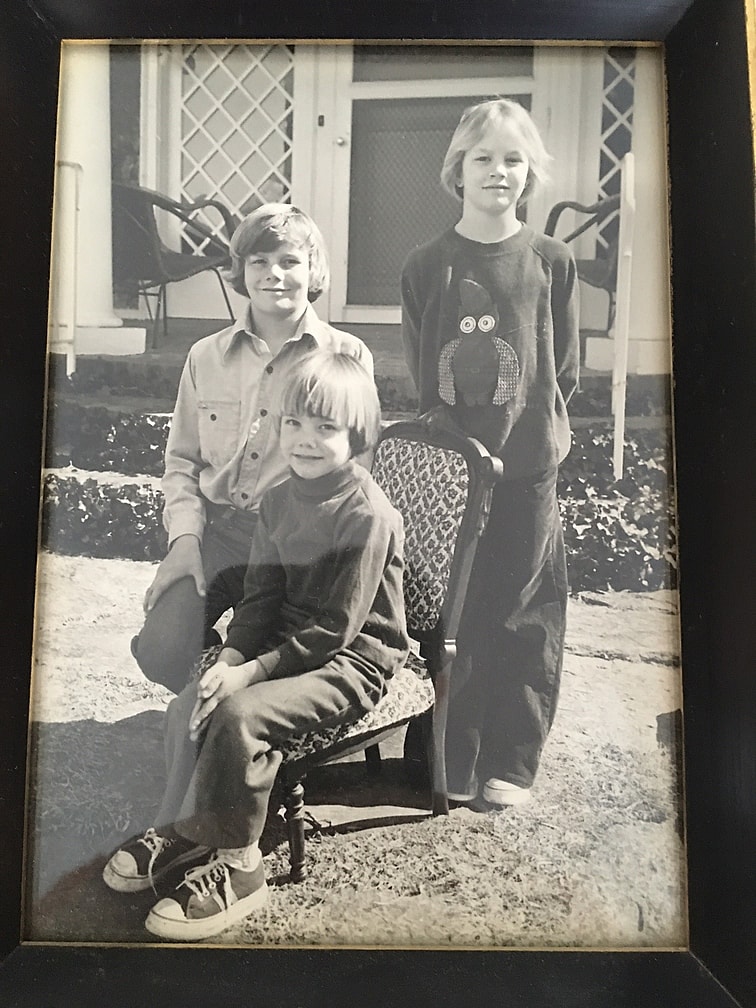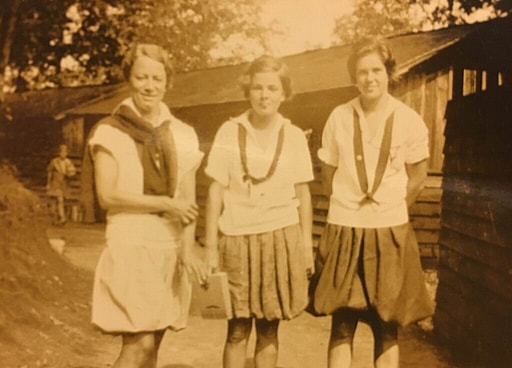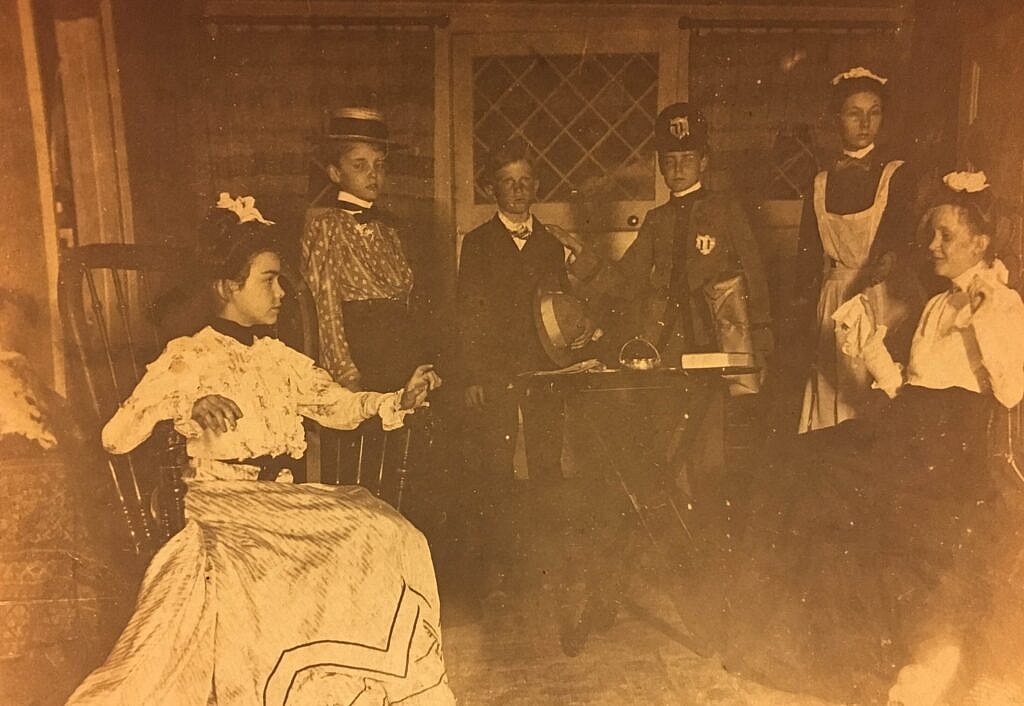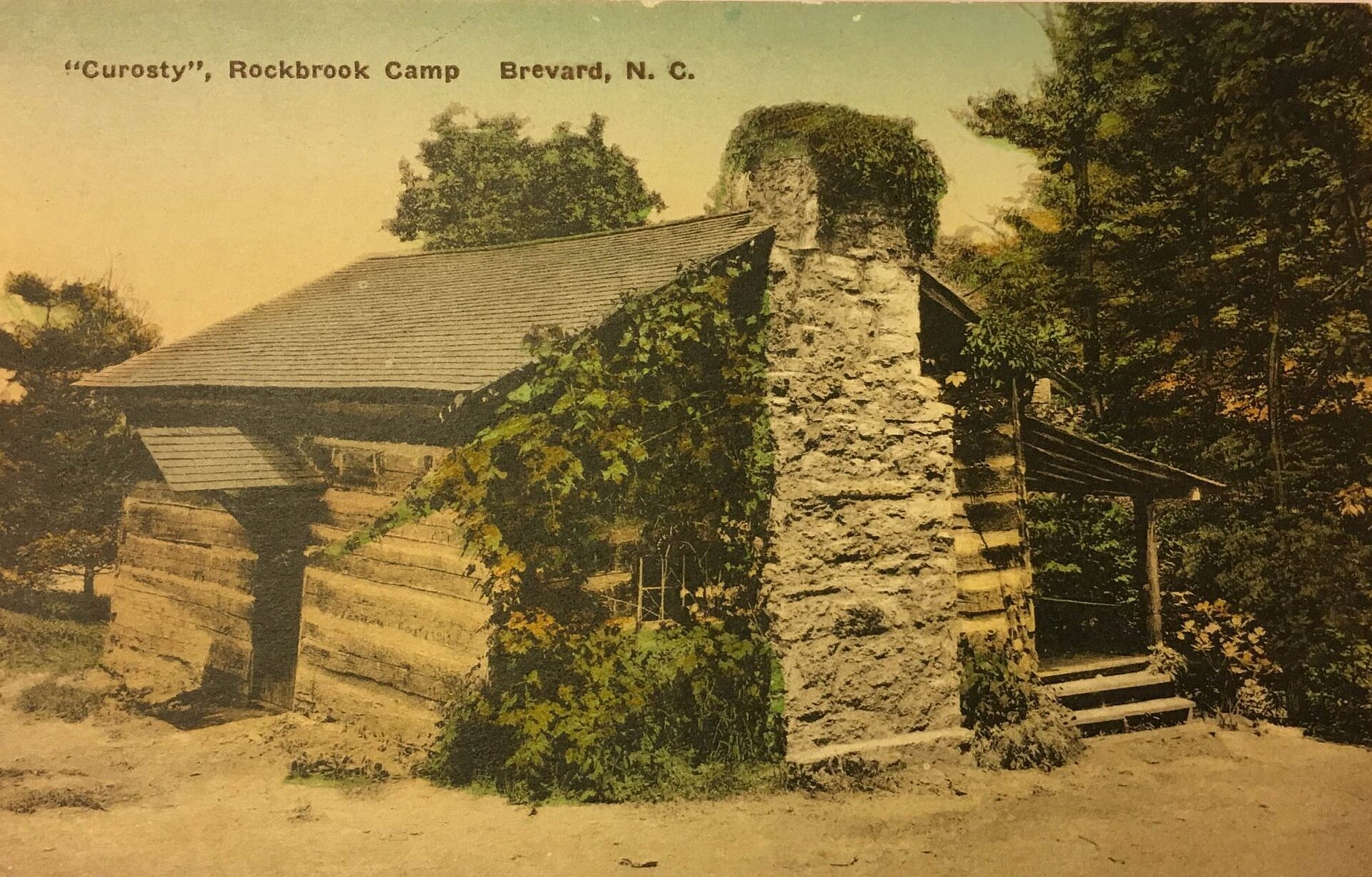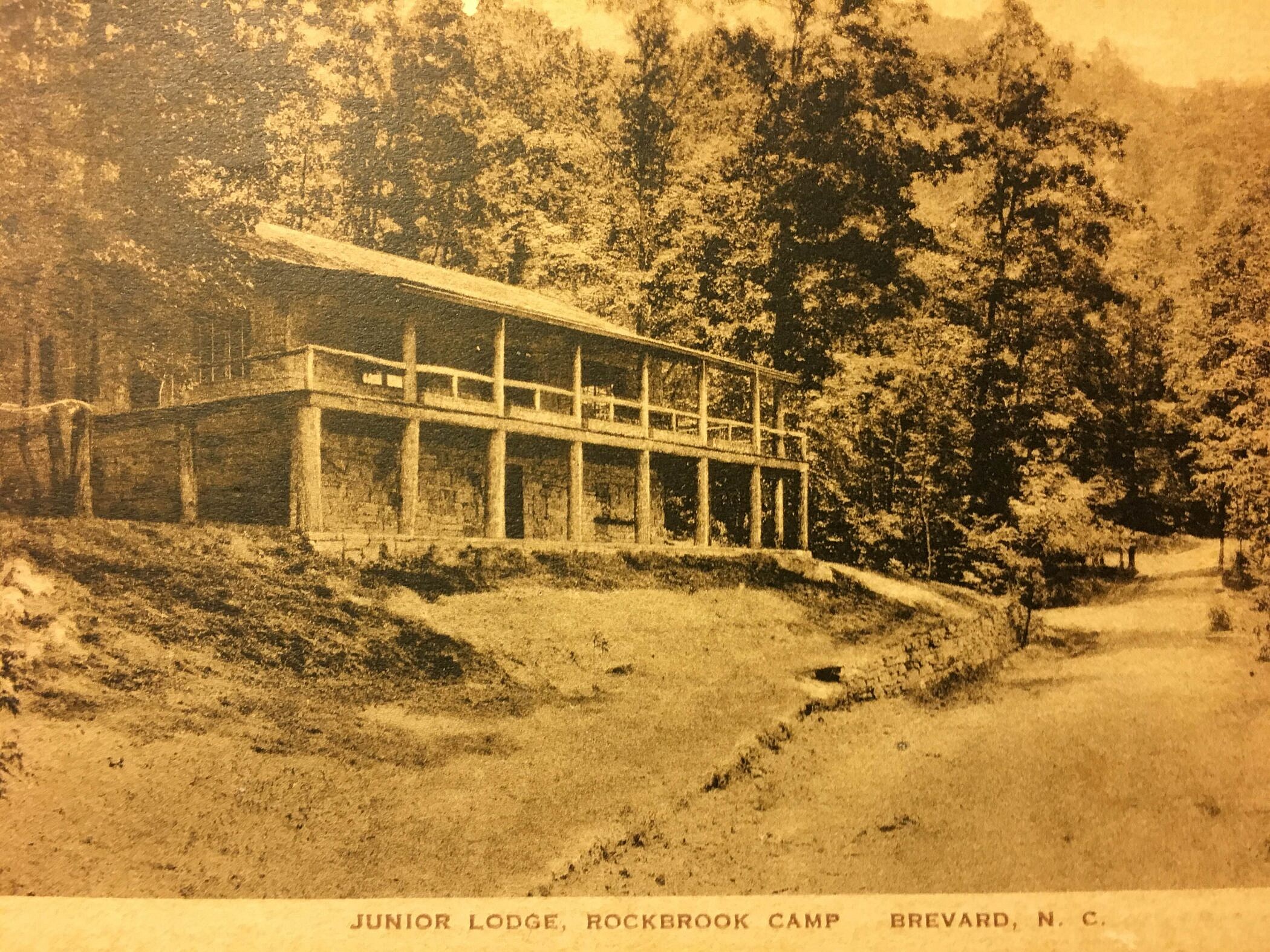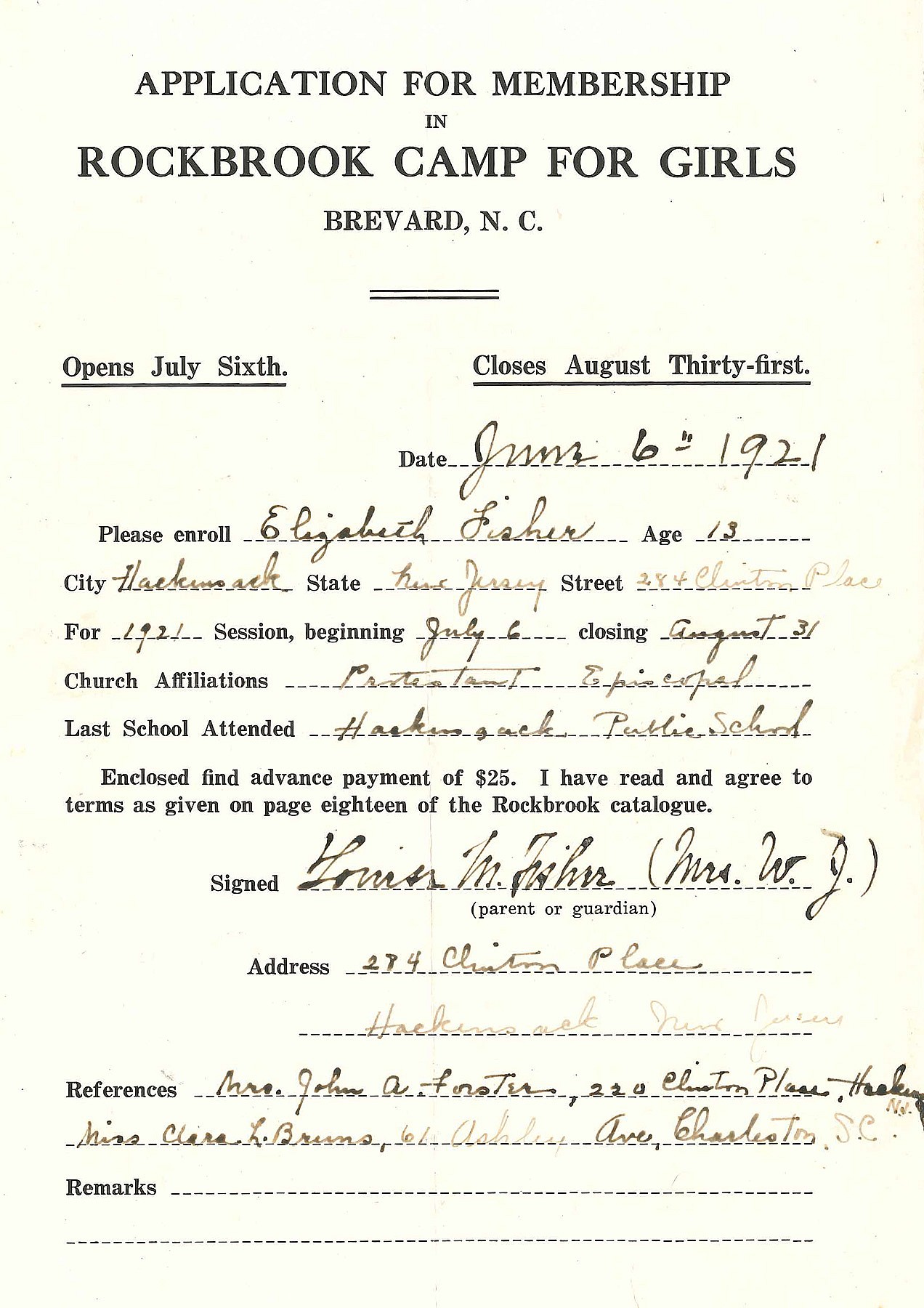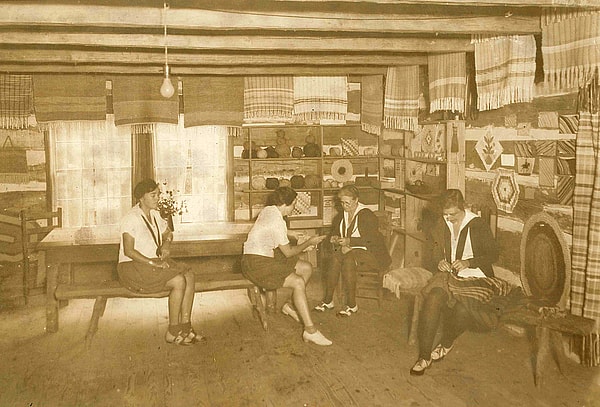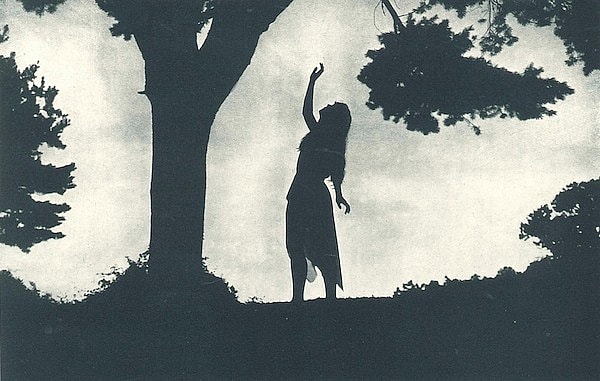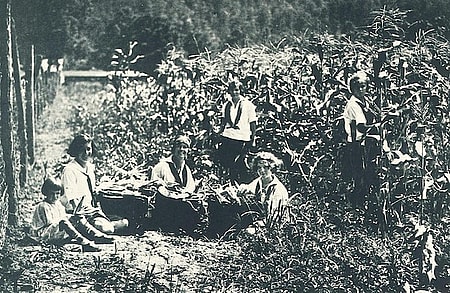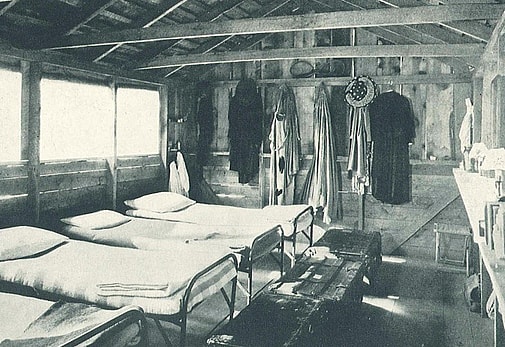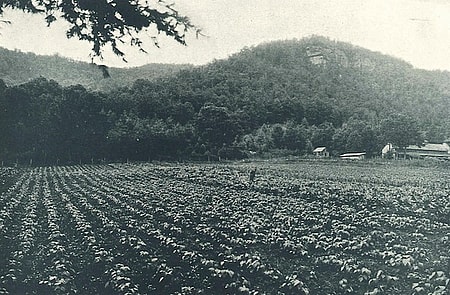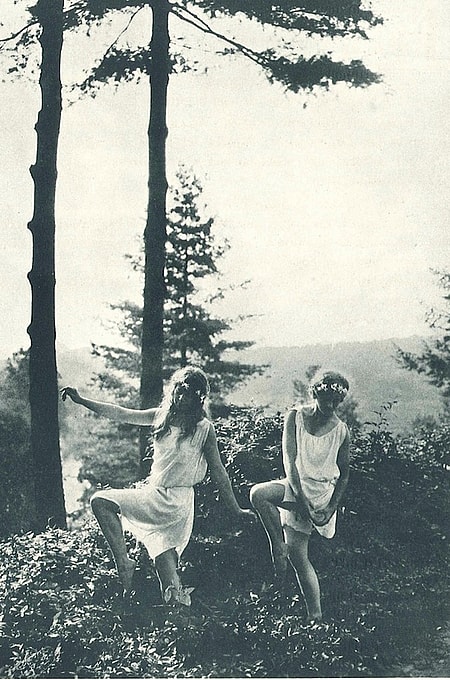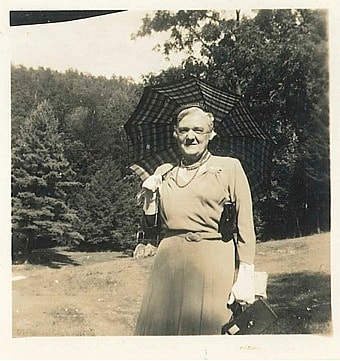If you look into the history of Rockbrook, you might be surprised. You probably know that it was founded in 1921 by Nancy Carrier on the property where she grew up. But did you know, for example, that she was the great-granddaughter of P.T. Barnum, the famous circus showman? Did you know that she was just 34 years old when she founded the camp, that she was a suffragette, and that she owned the camp until retiring in 1961? Nancy Barnum Clarke Carrier (her full name) was a true trailblazer. She helped found the southern section of the American Camping Association in 1923, serving as its President for the first 2 years. Later in life she was instrumental in starting the first public hospital in Brevard, and the Brevard Music Center. Inspirational and loved by so many, she lived until 1977.
Nancy Carrier established Rockbrook to create a special place for girls to gain independence, grow more confident and socially adept. She new that girls would learn and grow by doing things for themselves. Being someone who loved such things herself, she wanted girls to enjoy trying sports, exploring new outdoor adventures, riding horses, and working with arts and crafts. Nancy established many of the camp’s traditions and values that still define Rockbrook’s culture today. Her warm spirit set the tone for Rockbrook. Her kindness, caring and generosity formed the basis for the thriving camp community she created.
To help celebrate Rockbrook’s centennial, current Director Sarah Carter and several alumnae wrote and published a book focused on the history of the camp: “In the Heart of a Wooded Mountain: Rockbrook Camp for Girls 1921-2021.” This is a wonderful summary of the spirit of the camp, the life and vision of Nancy Carrier, and the many people who have made Rockbrook a part of their lives. It is full of fascinating photos and personal testaments to why Rockbrook means so much to so many people. It’s a window into life at camp and the inspired power of Rockbrook girls through the years.
Now a new photo essay has just been published about the rich tradition of summer camps in western North Carolina, and Rockbrook is prominently featured. After reading a bit about Rockbrook’s history on our website, the magazine reached out for us to provide historic photos and other archival materials. In this collage from the article (below), you can see our big felt “R,” a photo of Rockbrook girls posing in front of the Carrier house, and at the bottom, a bit of the very first Rockbrook Camp application. The article includes short profiles of a few other western NC camps as well, including Camp Carolina.
I recommend you pick up a physical copy of the magazine if you can. It’s available at several stores here in western NC. The article is very nicely designed. If you can’t find a copy, head over to the WNC Magazine website, and you can read “Happy Campers.”






